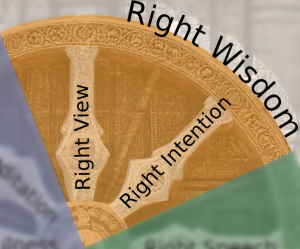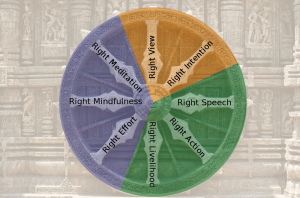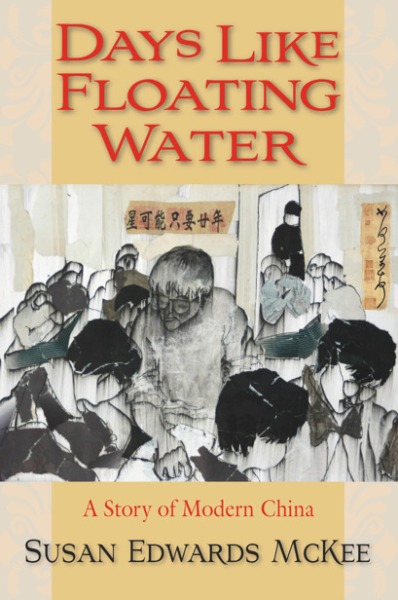
The Buddha laid out the Eightfold Path as a means to end the suffering of all living beings with the ultimate goal of enlightenment. Together with The Four Nobel Truths, it guides followers of his teachings on wisdom, morality (ethical conduct) and meditation (mental development). The Wheel of Dharma (pictured above) represents the Buddha’s teachings and it’s eight spokes symbolise the Eightfold Path. The Eightfold Path is listed at the bottom of this post and although these steps should be carried out together rather than separately, today I want to take a deeper look in to the first two – Right View and Right Intention.

Right view and right intention are considered the ‘wisdom’ stage of the Eightfold path. The path was set out by the Buddha, not to be followed step by step, but for each stage to be carried out in conjunction with each other. Therefore right view is considered the first and last step of a cycle that continues until enlightenment has been attained.
Put simply right view just means to understand the nature of life which is laid out by the Buddha in the Four Noble Truths: Life means suffering, the origin of suffering is attachment, the cessation of suffering is attainable and the path to the cessation of suffering (which is the Eightfold Path). It has nothing to do with knowledge or intelligence but is the wisdom and realisation of theses truths, which in turn allows for right intentions to follow.
Right intention is a little easier to comprehend as most are taught right from wrong and to only have good intent towards others. Those who have not learnt ‘right from wrong’ or right view may find it hard to carry out right intention which often leads to ones own suffering or that of another (the first Noble Truth). This is why the Eightfold Path is a cycle; if you’ve carried out an action with bad intention, it’s important to revisit stage one of the path again and realise what affect your action has had.
According to the Buddha there are 3 ‘right intentions’: renunciation of desire, good will and harmlessness. These right intentions lead to right actions and prevent harmful thoughts of anger, hatred, jealousy etc that lead to bad actions.
Many of you will understand the term ‘Karma’, some refer to it as ‘what goes around comes around’. Karma is based upon the Eightfold Path, as explained above, right view leads to right intention, right intention leads to right action. There are no cosmic forces saying, ‘you’ve done something evil, now I’m going to return evil to you three fold’; it’s a simple matter of doing good leads to more good.
A small example of bad intention leading to bad action would be cheating on a exam. Many feel the pressure and need for success when it comes to exams. Exams are a means of getting something you want – the grades to get that dream job. At first cheating may get you what you desired, but adverse affects could follow such as guilty conscience, difficulty in carrying out the future task or job the exam was intended for, which could lead to embarrassment or punishment when others realise you have cheated. This is just one small example of an everyday bad intention leading to a bad action that many wouldn’t think twice about doing. The same principles can be applied to every bad thought and action and with given thought you can map the ‘suffering’ or bad results from them.
Buddhists beliefs take in to account reincarnation, therefore if your bad intentions lead to bad actions in one life and continue to do so, the suffering will also continue in to future lives. However, you do not need to be Buddhist to become a better, kinder person; the Eightfold Path can be followed by anyone.
As mentioned in my welcome post, I don’t pretend to be a Buddhist expert, I am simply learning, so if anybody has anything to add to this article or believes anything to be incorrect, please let me know.In the near future I hope to look at the remaining two stages of the Eightfold Path (morality and meditation), although I have already touched on parts of them (namely right action) due to the cyclical nature of the path. The 8 steps are listed below along with the Four Noble Truths:

The Eightfold Path The Four Noble Truths
1. Right View 1. Life means suffering
2. Right Intention 2. The origin of suffering is attachment
3. Right Speech 3. The cessation of suffering is attainable
4. Right Action 4. The path to the cessation of suffering
5. Right Livelihood
6. Right Effort
7. Right Mindfulness
8. Right Concentration
All images are courtesy of commons.wikimedia.org.



